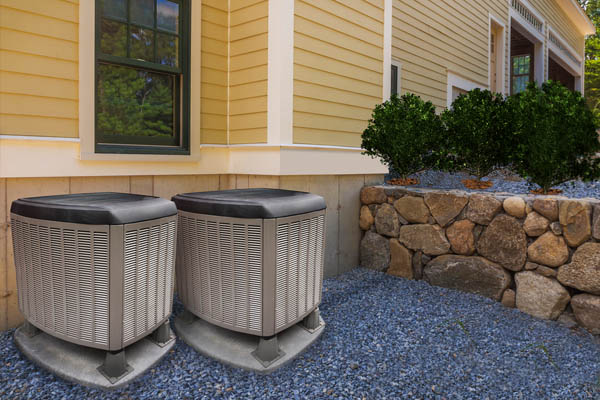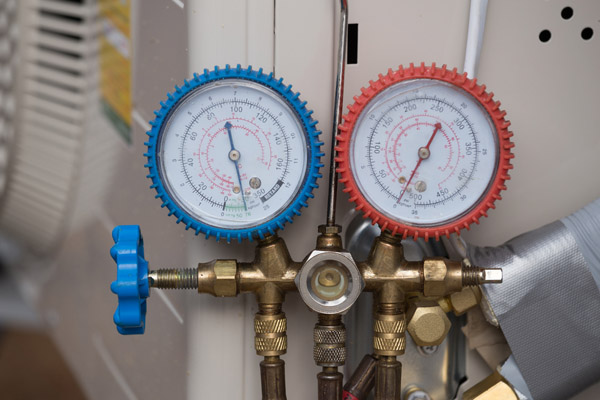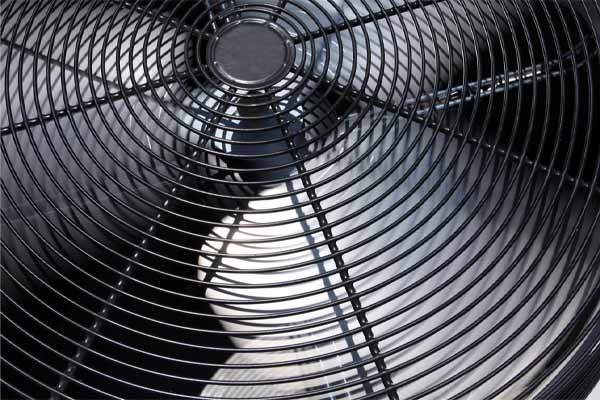How Does An Air Conditioner Work?

Whenever the house feels hot and stuffy, we turn our air conditioner on for relief. We just press a couple of buttons, wait for a few minutes, and then experience the joys of a noticeably cooler home. This is a fantastic piece of technology that allows us to bear the very worst of summer days. It helps us avoid potentially dangerous heat-related issues like heat stroke and heat exhaustion, and it also allows us to sleep comfortably at night.
Civilizations from earlier times would probably consider air conditioners as being downright magical given that they make it possible to control our own environment. In truth, however, this technology is really just the application of known scientific concepts. If you sometimes wonder, “How does an air conditioner work?”, then read on to get the answer.
How Does An Air Conditioner Work?
Table of Contents
This article will tell you everything you need to know about how your air conditioner keeps your home cool throughout the summer months.
Different Air Conditioner Components
Before delving deep into the cooling process, we should get better acquainted with the various parts that an air conditioner has. We’ll keep this as simple as possible by focusing on the four primary parts of an air conditioner. Likewise, we’ll discuss the functions they perform within the cooling cycle:
1. Air Conditioner Refrigerant

The refrigerant inside of your air conditioner is basically the system’s lifeblood. This chemical helps transport heat away from the building’s interior and out into the outside environment. The cooling cycle describes the journey of the refrigerant across multiple components along with the changes that it undergoes along this journey.
2. Evaporator Coils
The evaporator coils are the primary component of your air conditioner’s interior unit. This part of the AC unit interacts with the interior of the home to collect and absorb heat. You always want to keep the evaporator coils clean so that they perform optimally. Part of this cleaning is regularly replacing the air filters in your air conditioner.
3. Air Conditioner Condenser Coils
This is the primary component of the unit outside of your home that interacts with the environment outdoors. It releases heat that the system has already collected. These coils can get dirty too and thus, you have to clean them from time to time. Before summer arrives, consider having your air conditioner tuned up.
4. An Air Conditioner’s Compressor
The compressor is a pump that keeps the refrigerant flowing from the evaporator coil to the condenser coil. In essence, it is really the heart of your air conditioner.
An Air Conditioner’s Standard Cooling Process
1. The Thermostat Alerts The Air Conditioner That Cooling Is Needed

Let’s consider this process from its very start. You’ve walked in the door after completing a hard day on the job. You’d turned your air conditioner to a higher temperature before stepping out in the morning. This way, you do not pay to cool an empty home. It’s hot and stuffy in your home so you turn up the air conditioner by using the thermostat to set the desired temperature. The ambient temperature in your home is then measured by sensors. If the ambient temperature is higher than the temperature you want, the thermostat will send a signal that starts the air conditioner’s cooling cycle. The A/C compressor will wake up and start pushing refrigerant throughout the system. The fans will come to life too.
2. Indoor Heat Is Absorbed By The Refrigerant
The first place that the refrigerant or coolant stops along its journey is at the evaporator coils within the air conditioner’s interior unit. At this time, the refrigerant will be very cold. Once it comes in contact with the air inside of the home, it will begin absorbing heat. The indoor air will grow cooler as the refrigerant grows hotter. Whenever there’s excess humidity inside of the building, vapor may convert to water due to the reduced temperature. Thus, an air conditioner can both cool the indoor environment down and regulate its humidity. There is a standby tray for collecting the resulting moisture and then sending it outside so that water doesn’t pool on the floor and cause flooring damage.
3. Cooled Air Is Blown Back Into The House By Fans

Fans blow cooled air around the evaporator coils before sending it back into the house. With a central air conditioner, cold air is pushed through the ductwork and distributed to each room so that cooling is uniform. With a multi-split system or a window air conditioner, the cold air is blown by fans into the specific zone or room in which the unit is installed. Multi-split systems make it possible for people in each room or zone to customize temperature settings according to their preferences or needs. It’s also possible to turn off inside units in individual rooms to limit energy use. Talk to Hart Home Comfort to learn more information about ductless HVAC systems.
4. Heat Collected By The Refrigerant Is Released Outside
Your air conditioner’s refrigerant has limits on how much heat it can absorb. Once hot, it has to travel to the outside condenser so that it can release the collected heat via the condenser coils. So long as the coolant is hotter than the temperature outside, it can dump heat effectively until equilibrium is reached.
5. Hot Air Is Blown Outside
After the refrigerant has been cooled back down, it gets pumped back into the indoor unit by the compressor so that the cycle can start again. This process goes on and on until the temperature that’s been set at the thermostat is reached. Then, the air conditioner will pause its operations and rest for a while. If the temperature indoors starts to rise once more, the cooling process will begin anew.
Conclusion
Air conditioners don’t actually create cold air from nothing. Instead, they subtract heat from the home in small increments until it’s cold enough to feel comfortable in. This is a smart and efficient design that’s worked quite effectively for many decades. New models are increasingly pushing boundaries on energy efficiency for lower energy use and improved home comfort.
For All Of Your HVAC Requirements, Call Hart Home Comfort
 Call Hart Home Comfort for the best heating and cooling solutions in Nassau County, Suffolk County, and Queens, New York. We are staffed by highly qualified technicians who have the training and skills for performing first-rate services whenever HVAC tune-up, repair, maintenance, or installation projects are required. They know how to get things done right.
Call Hart Home Comfort for the best heating and cooling solutions in Nassau County, Suffolk County, and Queens, New York. We are staffed by highly qualified technicians who have the training and skills for performing first-rate services whenever HVAC tune-up, repair, maintenance, or installation projects are required. They know how to get things done right.
You will also get the most competitive prices on HVAC services from Hart Home Comfort. With maintenance services, we can boost home comfort, improve the efficiency of your heating and cooling equipment, and help lower your energy bills. If your HVAC system must be replaced due to age or damages, our technicians will help you find the right model for your budget. All of the work that we perform is backed by an impressive satisfaction guarantee. You can schedule an appointment for services by contacting Hart Home Comfort today. Best of all, our onsite estimates are absolutely free.
For any questions about what Hart Home Comfort can do for you, give us a call today. Click here to contact us now or call us at (631) 667-3200 to find out more!